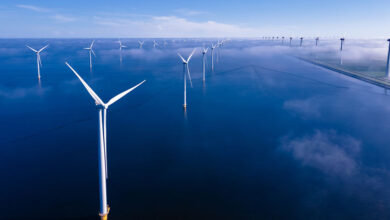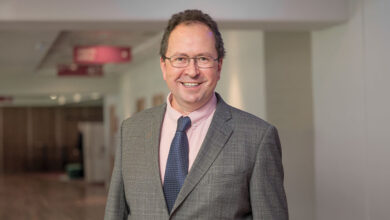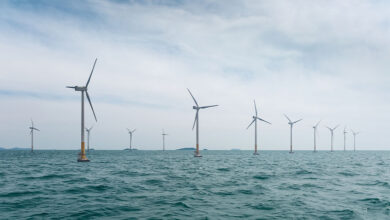Incentivising the green
 Better incentives are needed to convince homes and businesses to invest in renewable energy, Duncan Stewart tells Meadhbh Monahan.
Better incentives are needed to convince homes and businesses to invest in renewable energy, Duncan Stewart tells Meadhbh Monahan.
The green economy is too often just “rhetoric” according to the popular sustainable architect, who believes that Ireland has much green potential but few incentives for businesses and homes to follow this through.
While thousands of viewers tune in to ‘About the House’ each week to see how to sustainably renovate their homes and discuss relevant environmental issues, when it comes to large scale sustainability – such as sustainable communities – Ireland is far behind other European countries such as Sweden, Stewart contends.
“Major stumbling blocks” are preventing the enhancement of a green economy in Ireland. These include the feed in tariff and carbon tax being too low and “bottle-necks” in the planning system.
“We import €6.5 billion in coal, oil and gas each year. You can imagine if that money stayed in Ireland in the renewable energy sector to replace the imported fossil fuels – that would be an incredible opportunity for jobs all over Ireland,” he believes.
He admires how the UK’s feed-in tariff pays energy producers 26 pence per kilowatt hour (kWh), plus an additional 3 pence per kWh when they export any surplus back to the grid.
“In comparison ours is 9 cent per kWh, plus a small top-up, which is not enough,” Stewart states.
Whilst a UK owner of a wind turbine that generates between 0.5 kW and 15 kW would effectively get their money back over a five to eight year period, an Irish owner of the same wind turbine would not see a recompense for another 25 years, Stewart argues.
A good feed-in tariff would reduce the costly fuel imports and sustainable jobs could be created in the building and running of offshore and onshore wind farms and anaerobic digestion plants.
It would also assure people that they are making a good investment. “You need to know that whatever you invest in will be secure in the long-term and will create jobs,” he says.
The same issue applies to food, according to Stewart. “We import €4.7 billion in food. We clap ourselves on the back because we export €7.5 billion but most of that [imported] food could be grown here,” he tells eolas.
If more food were grown locally and sold in cooperatives, communities would then become more resilient and sustainable, he adds. Renewable energy could also be traded locally.
Additionally, there are opportunities in agriculture. If farmers “go down the sustainability route” toward anaerobic digestion plants, waste streams such as sewage, slurry and food waste can be turned into a digestate that is put back on the land.
The complexity and “bottle-necks” in the planning system also pose problems. “People are going for a smaller turbine with less height and power in order to avoid planning. This compromises the turbine and only creates half the power,” he warns. The planning system must be simplified according to Stewart.
When asked what advice he would give policy-makers, Stewart replies: “We are not giving the right incentives to people to start moving forward.”
He advocates “a stick-and-carrot approach” whereby those who create the pollution are penalised and the money from fines ring-fenced and used to fund sustainable enterprises such as wind farms, wave energy and anaerobic digestion plants.
The carbon tax, at €15 per tonne is “too low,” according to Stewart. He believes that money from a higher carbon tax could be used to go back into the community it came from in the form of low interest loans for renewable energy projects, which would be backed up with a better feed-in tariff.
Stewart concludes: “There’s an awful amount of talk around the green economy and a lot of it is rhetoric. We need to put it into real actions.”





